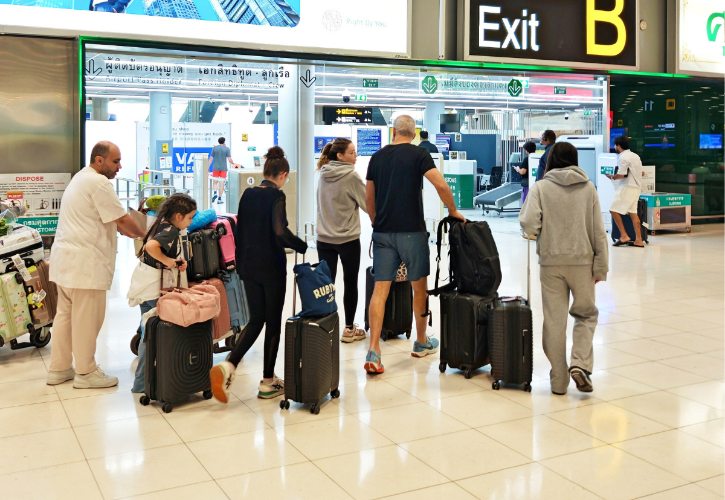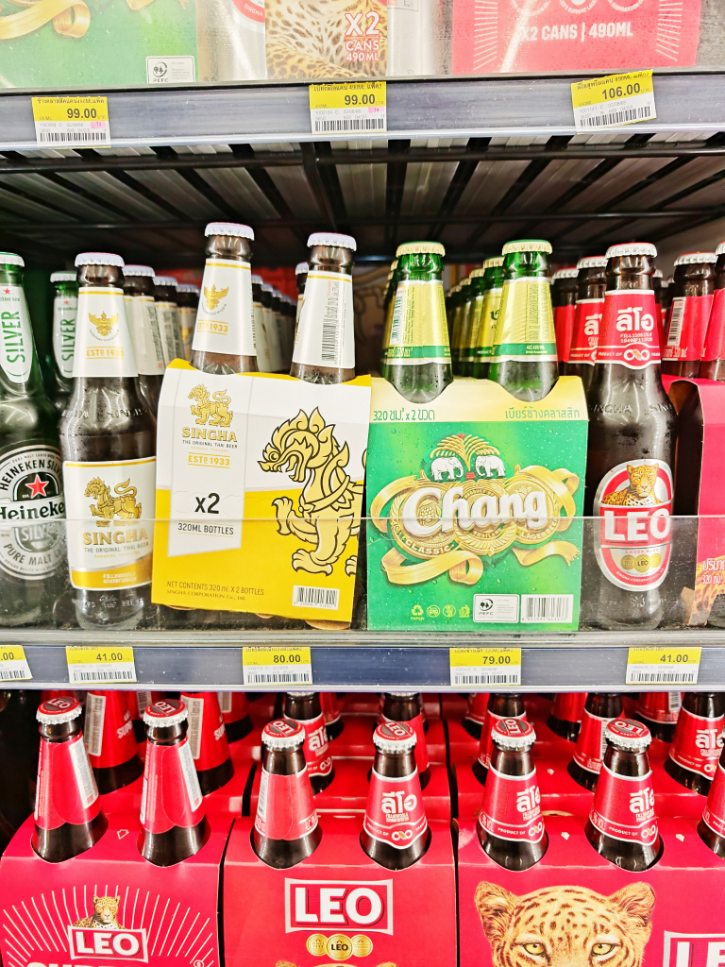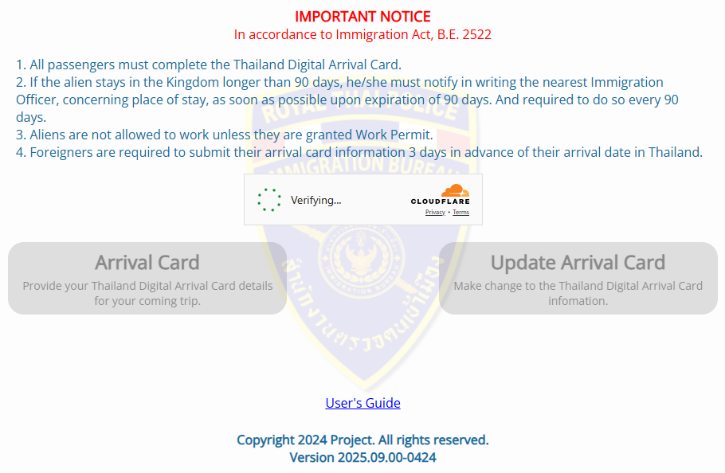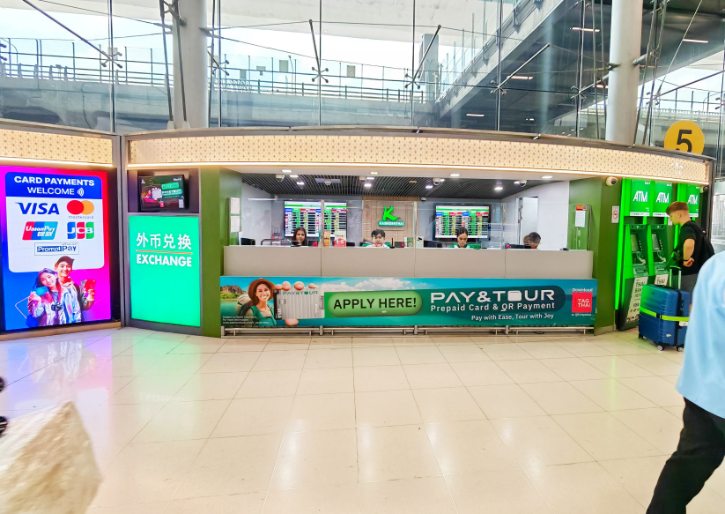
Planning a trip to Thailand? A lot has changed recently, and some of these updates will definitely affect your travels.
Let me walk you through the 5 biggest changes you need to know about before you go.
1. Thailand’s Alcohol Rules Just Changed Twice

a. What Exactly Changed
Here’s where things get interesting. Thailand introduced a major amendment to its alcohol laws in November 2025, and the changes have been a bit of a rollercoaster.
First, they introduced something nobody expected. Starting November 8, 2025, you could be fined 10,000 baht (about $310) just for drinking during restricted hours. Yes, you read that right. Even tourists.
Before this, only the sellers got in trouble. Now? If you’re caught sipping a beer at 2:01 PM that you bought at 1:59 PM, you could face a hefty fine. The backlash was immediate and intense.
b. The Reversal of the Afternoon Ban
Just six days later, the government did something surprising. They listened.
On November 14, 2025, officials announced they would completely scrap the afternoon alcohol ban. The old 2 PM to 5 PM restriction? Gone. This change should take effect around December 1, 2025.
The deputy prime minister admitted the original rule from 1972 was outdated. It was meant to stop government workers from drinking during office hours, but that reasoning doesn’t make sense anymore.
c. Hours When Drinking Is Still Restricted
Important: The midnight to 11 AM ban stays in place. You can still be fined that 10,000 baht (about $310) if you’re drinking during these hours.
Here’s what’s allowed now:
- 11 AM to midnight: You can buy and drink alcohol freely
- Midnight to 11 AM: No alcohol sales or consumption (except in special zones)
d. Who These Rules Affect Most
Everyone needs to pay attention to this, but it hits some groups harder:
- Late-night party-goers: That after-midnight drink could cost you
- Early morning travelers: No airport beers before 11 AM at regular restaurants
- Beach lovers: Morning drinks by the beach are off-limits
e. Where You Can Always Drink: The Exceptions
Good news. Some places have 24-hour exemptions, but let me be specific about what counts and what doesn’t:
International Airport Passenger Areas
- YES: Bars and restaurants AFTER security/immigration checkpoints
- YES: Airline lounges in the departure area
- NO: Restaurants in the public arrival hall
- NO: Convenience stores before check-in counters
- Example: That beer at the airport bar while waiting for your flight at 3 AM? Totally fine. But the 7-Eleven outside arrivals follows regular rules.
Licensed Hotels (Must Be Registered Under the Hotel Act)
- YES: Hotel bars, restaurants, and poolside service
- YES: Room service at any hour
- YES: Minibars in your room
- NO: Small guesthouses (even if they call themselves “hotels”)
- NO: Hostels and homestays
- Tip: Major chains like Marriott, Hilton, or established Thai hotels like Centara are covered. That family-run “hotel”? Probably not.
Entertainment Venues with Official Entertainment Act Licenses
- YES: Proper nightclubs in designated zones (like RCA in Bangkok)
- YES: Licensed go-go bars in Patpong, Nana, Soi Cowboy
- NO: Regular bars without entertainment licenses
- NO: Beach bars (unless part of a licensed hotel)
- Important: Just because a place stays open late doesn’t mean it has this exemption
Where You CANNOT Drink During Restricted Hours (Midnight to 11 AM)
- All convenience stores (7-Eleven, Family Mart, Lawson)
- Supermarkets (even 24-hour ones like Tesco or Big C)
- Street food stalls and food courts
- Regular restaurants (unless inside a licensed hotel)
- Beaches and public spaces
- Tour boats and ferries (unless specially licensed)
f. Practical Tips to Avoid Fines as a Visitor
Let me save you some trouble:
- Set a phone reminder for 11:50 PM if you’re out drinking
- Ask your hotel if their bar has the proper license for 24-hour service
- Don’t assume convenience stores will sell you alcohol just because they’re open
- Keep your receipt if you buy alcohol close to restricted times
g. Bottom Line for Travelers
The afternoon ban is disappearing, which makes things simpler. But that midnight cutoff is serious business. The 10,000 baht (about $310) fine is real, and they’re enforcing it.
Trust me, you don’t want to explain to your travel companions why you just lost $310 over a late-night beer.
2. Thailand’s Digital Arrival Card (TDAC) Is Now Mandatory

a. Thailand’s New Digital Arrival Card Is Mandatory
The paper arrival card is now history. Thailand has gone fully digital, and everyone entering the country must complete the online TDAC form before arrival. No exceptions for tourists.
This isn’t optional. Without it, you’ll face delays at immigration.
b. When You Need to Complete It
Within 3 days (72 hours) before arrival
Not a week before. Not at the airport. Exactly within that 72-hour window.
c. Step by Step: How to Fill Out the TDAC
Here’s exactly what to do:
- Visit the official site: https://tdac.immigration.go.th/
- Click “Arrival Card” (it’s free, ignore any sites charging fees)
- Fill in:
- Passport details
- Flight number
- Hotel address in Thailand
- Purpose of visit
- Basic health questions
- Submit and check your email
- Save the QR code to your phone
- Show it at immigration when you arrive
d. What Happens If You Forget
Forgot to do it? Some major airports have kiosks:
- Suvarnabhumi (Bangkok)
- Don Mueang (Bangkok)
- Phuket
- Chiang Mai
- Hat Yai
But using airport kiosks means longer queues. Do yourself a favor and complete it beforehand.
e. Who Does Not Need to Do This
Only two groups skip the TDAC:
- Transit passengers who don’t go through immigration
- Border pass holders (for local border crossings)
Everyone else, including children, needs their own TDAC.
3. Ride Hailing Apps Like Grab and Bolt Now Have Stricter Rules

a. What Changed with Ride-Hailing Apps
Since October 2025, Thailand has completely overhauled how ride-hailing works. Every driver now needs:
- A public driving license (not just a regular one)
- Official public vehicle registration
- Daily identity verification when logging into the app
The apps themselves must show you the driver’s full name, photo, license number, and exact fare before you book. No more surprises.
b. Why This Is Actually Good News
I know it sounds like red tape, but this actually solves real problems tourists have been complaining about for years:
- Better safety: Every driver is properly licensed and verified
- Accountability: Drivers can’t share accounts anymore
c. What You Will Notice as a Passenger
Here’s what’s different when you open Grab or Bolt:
More Information Upfront
- Full driver name and photo
- Driver’s public license number
- Vehicle registration details
One-Time Identity Verification (Here’s Exactly What You’ll Do):
When you first use these apps in Thailand, you’ll need to complete KYC (Know Your Customer) verification:
1. Phone Number Verification
- Enter your phone number (international numbers work)
- Receive and enter SMS code
- This becomes your account identifier
2. Passport Upload
- Take a clear photo of your passport’s main page
- Make sure all corners are visible
- No glare or shadows on the text
- The app checks this matches your account name
3. Selfie Verification
- Take a real-time selfie (can’t use existing photos)
- Must clearly show your face
- Remove sunglasses, hats, or masks
- Some apps use “liveness detection” – you might need to blink or smile
Privacy Note: Your data is encrypted and drivers only see your first name and verification badge, not your passport details.
Possibly Longer Wait Times
- Fewer drivers currently meet the new requirements
- This is temporary as more drivers get licensed
- Peak hours might have noticeably longer waits compared to normal times
Tips for Smooth Verification
- Complete it at your hotel with good WiFi, not at the airport
- Have your passport ready
- Do it before you actually need a ride
- If rejected, check photo quality and try again
d. Tips for Using Grab and Bolt
Make your ride-hailing experience smoother:
- Download and set up apps before arriving in Thailand
- Complete the identity verification when you have good WiFi at your hotel
- Book rides earlier during peak times, as driver availability might be limited
- Screenshot your booking details in case of connectivity issues
- Save your hotel address in Thai in the app for easy returns
4. Tourists Can Now Use PromptPay in Thailand

a. Thailand’s QR Code Payment System Explained
PromptPay is everywhere in Thailand. Street food vendors, taxi drivers, massage shops, everyone uses those QR codes for payment.
But here’s the thing: this system was designed for Thai bank account holders only. Tourists could only watch locals pay instantly while they fumbled for cash.
That’s finally changed. Thailand has now opened up their cashless payment system to international visitors through two new methods.
No more being left out of the cashless revolution. This is a game-changer.
Option 1: If You Are From China
Chinese tourists have it easiest. You now have the option to use:
- Alipay
- WeChat Pay
- UnionPay
Just scan Thai QR codes with your regular Chinese payment app. It converts automatically. Simple as that.
Option 2: Everyone Else Uses the TAGTHAi App
For everyone else (Americans, Europeans, Australians, etc.), there’s the TAGTHAi app with “Easy Pay” feature:
- Download the TAGTHAi app (official tourism app)
- Set up TAGTHAi Easy Pay e-wallet
- Load money into your wallet
- Scan any PromptPay QR code to pay
b. How This Changes Your Travel Experience
This seriously improves your Thailand experience:
- Street food: No more fumbling for exact change
- Markets: Bargain first, then pay instantly
- Taxis and tuk-tuks: Many now prefer QR payment
- Small shops: Even tiny stores accept it
But here’s the reality check: Not everyone takes digital payments yet. Some places still only accept cash:
- Some traditional markets and rural vendors
- Temple donations and entrance fees at smaller temples
- Street performers and tips
- Emergency situations when internet is down
My advice: Use digital payments where you can, but always carry backup cash. I’d suggest having at least 1,000-2,000 baht in small bills on you. Trust me, you don’t want to be stuck without cash when that perfect street food stall doesn’t have a QR code.
c. What You Need to Set It Up

- Visit a KBank FX Booth: You must physically go to a KASIKORNBANK Foreign Exchange booth (found at airports and major tourist areas)
- Bring foreign cash: You’ll need your home currency in cash (USD, EUR, AUD, etc.) to exchange and load onto the e-wallet
- Important: You cannot use Thai Baht for the initial setup. It must be foreign currency that gets exchanged
- For more details on how to register for TAGTHAi Easy Pay, you can check their official website here
The good news: They offer a “Buyback Guarantee”. When you leave Thailand, any remaining balance can be exchanged back to your original currency at the same rate you got when loading up. No loss on exchange rates.
Practical tip: Do this at the airport when you arrive, or find a KBank FX booth in tourist areas like Siam Square or major shopping malls.
5. White Temple (Wat Rong Khun) Entry Fee Doubles for Foreigners

a. What Is Changing at Wat Rong Khun
The famous White Temple in Chiang Rai doubled its entrance fee for foreign visitors on January 1, 2026:
- Before January 2026: 100 baht
- Since January 2026: 200 baht
- Thai citizens: Still free
b. Why the Temple Is Increasing Prices
The temple needs the money for maintenance. This isn’t a government site. It’s privately owned by artist Chalermchai Kositpipat, and maintaining those intricate white structures costs a fortune.
They’re also adding new features like the “Cave of Art” and managing millions of annual visitors.
c. When the New Price Takes Effect
The 200 baht fee took effect on January 1, 2026.
If you’re planning a visit, budget for the new price of 200 baht per person.
d. What You Will Pay: And What Locals Pay
Here’s the breakdown:
- Foreign tourists: 200 baht ($6.20)
- Thai citizens: Free
- Children: Check at entrance (policies vary)
Yes, dual pricing exists throughout Thailand. This is normal at many attractions.
e. Is It Still Worth Visiting
Absolutely. Even at 200 baht, the White Temple remains one of Thailand’s most stunning attractions. Where else can you see contemporary Buddhist art this unique?
Consider this: It’s still cheaper than a coffee at Starbucks back home, and you’re supporting the preservation of incredible art.
Final Thoughts
Thailand is modernizing fast, and these changes reflect that. Some make things easier (digital payments, clearer ride-hailing rules), while others add steps to your planning (TDAC, new alcohol rules).
The key is knowing about them before you go. Now you do. Have an amazing trip, and remember, Thailand remains one of the most welcoming destinations in the world.
Safe travels! 😊

